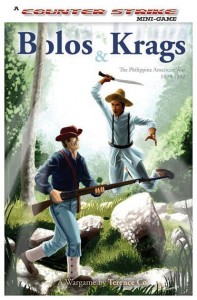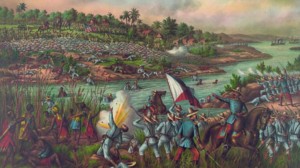
Philippine-American War Computer Game - Bolos and Krags: The Philippine American War 1899-1902 Description Type Wargames Category Post-NapoleonicWargame Mechanisms Area MovementCampaign / Battle Card DrivenCard Drafting Family Country: Philippines From the designer: On June 12, 1898. Filipino revolutionary forces under Emilio Aguinaldo declared proclaimed independence of the Philippine islands from the colonial rule of Spain. The declaration of independence however was not recognized by the United States of America and Spain since the Spanish government ceded the Philipines to the USA in the aftermath of the 1898 Treaty of Paris which formally ended the Spanish American war (April 25 to August 12, 1898). Tensions already existed between both sides due to conflicting movements of independence and colonization further aggravated by misunderstandings on both sides and feelings of betrayal on the Filipino side. The tensions escalated between the former allies on February 4, 1899 when a Filipino soldier was shot by an American soldier (William W. Grayson) in Manila. Fighting soon erupted in Manila and culminated in an official Filipino declaration of war by the Malolos congress on June 2, 1899. The war would last 3 bloody years and would see a short conventional war followed by a long guerilla war which would be a prelude of things to come in Vietnam 60 years later. More information at this link: https://boardgamegeek.com/boardgame/31768/bolos-and-krags-philippine-american-war-1899-1902 … [Read more...]

















